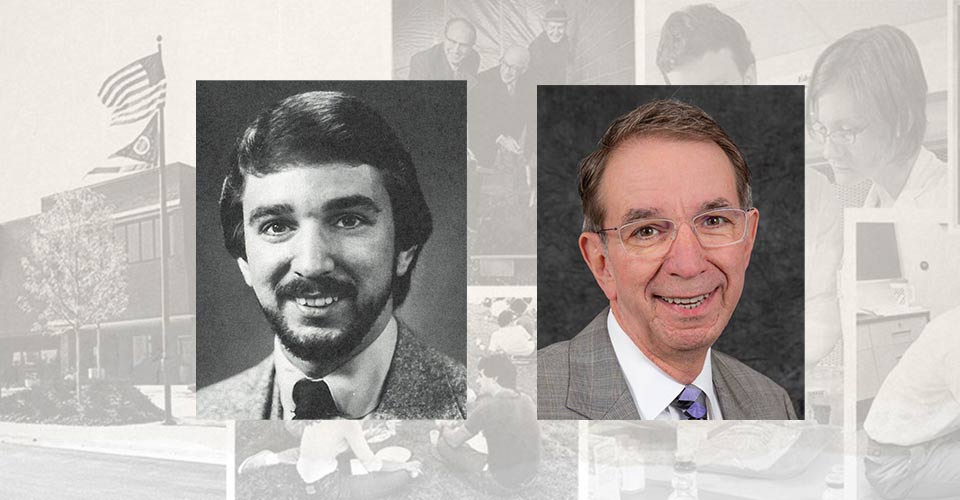The celebration of NEOMED’s 50th anniversary kicks off today, Nov. 15, with a program in the Jay A. Gershen Atrium in the NEW Center at noon. Among the presenters will be Joseph Zarconi, M.D., professor of internal medicine and a member of NEOMED’s first graduating class in 1981.
The Pulse asked Dr. Zarconi to reflect on ‘three things that have changed the most since I came to NEOMED.’ Here’s his response:
1. Campus and organizational structure
Students and faculty colleagues are likely tired of hearing me say that when I first arrived on the campus of what was then NEOUCOM, there was nothing but cornfields in every direction. The charter class was gathered for the groundbreaking here in Rootstown, and we were told that this was where we were going to be receiving our medical degrees. It seemed like such a leap of faith back then. It’s been a joy to watch the development of what is now a sprawling campus in Rootstown that includes multiple buildings and even student housing facilities. The charter class experienced the medical school curriculum in a single building with no food services, a single auditorium and minimal small group classroom space.
In addition, not only has the physical campus exploded, but there’s been substantial change in the way the institution is structured, including having evolved from being a single college of medicine to now an independent university of four colleges. Also, the original six-year B.S./M.D. training model with three feeder universities as partners has now evolved to a more traditional 4+4 for curriculum at the College of Medicine. And a College of Pharmacy has been added, a College of Graduate Studies has been added, and now a dental college is underway. So in terms of campus and organizational structure, there’s been tremendous evolution.
2. Clinical partner geography
At the time of the school’s founding, I believe there were seven or eight clinical institutions that were referred to as “major affiliated partners.” I believe now the College of Medicine has more than 30 clinical partners across a geography that goes beyond the original configuration of Youngstown, Canton and Akron to include major relationships in Cleveland and also training partners in Toledo and Columbus and other areas. The addition of Cleveland as a partner community was the first and perhaps the most significant expansion of the clinical partner geography. And the College of Pharmacy has continued to grow its clinical partner base as well. Dr. Langell's recent efforts to secure a meaningful new partnership with University Hospitals of Cleveland is perhaps in the most significant contemporary development in terms of expansion of our clinical partner reach.
3. Institutional output
When the College of Medicine was founded, it obviously had the identity of being an unknown school. When students were applying for residencies, most residency programs had never heard of the institution, and our leadership understood that a lot of work and time would need to be invested to eventually build the institution’s reputation. Now there are impressive numbers of physician and pharmacy graduates, and scholars have completed their graduate studies here as well, and those graduates are most densely spread across the geography of Ohio (which has been immensely supportive of the College of Medicine‘s original charter and has been immensely beneficial to Ohio), but also across the United States and beyond. In addition, there are many stories of graduates of our colleges who have been recognized locally, regionally and nationally for their clinical work, scholarly endeavors and leadership achievements. So the identity of the organization from a single College of Medicine that no one had ever heard of to a University of four colleges that has transformed the health care workforce across Ohio and beyond is perhaps the most exciting change I have borne witness to over the institution’s 50-year history.
